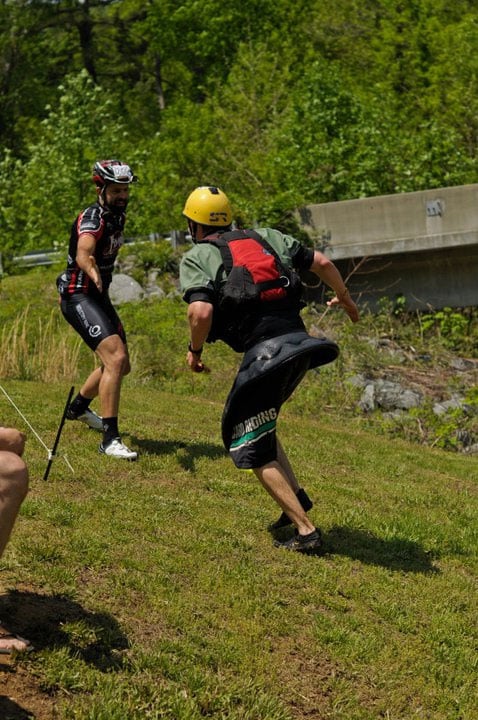Photo: Lee Timmons
I have always been a very focused individual. When I have a goal, I search for the most direct and efficient path to reach it. This tunnel vision approach has been an asset to me throughout my high school and university careers… I learned how to work smart, and as a result didn’t have to study nearly as much as many of my peers.
While this laser-focused mentality can come in useful in other aspects of life, it holds no water in athletics.
Growing up as a competitive whitewater kayaker, I was always under the impression that I should strengthen only those muscles that I needed for my sport. All others could fade away for all I cared; they were nothing but dead weight for that sport. My workouts were focused on the upper body at all times, and did not involve very much flexibility or joint mobility work. They were also very repetitive, since I thought that I had effectively targeted all of the most important muscles that I used when paddling.
I operated under this mentality for a long time, but struggled with tendonitis and a myriad other injuries. I also could not quite reach the results that I knew I was capable of. There was something missing there, and I knew it.
A few years ago, I took it upon myself to pick the brains of some of the most knowledgeable exercise sciences individuals that I knew. These people included UNCA strength coaches, CrossFit Asheville coaches, and Olympic paddlesports coaches. They finally hammered into my stubborn brain the fact that the human body is one holistic and incredibly intertwined machine. We cannot strengthen only a part of it and expect it to continue to operate efficiently.
In response to this revelation, I applied a new workout regime… variety! I started adapting my gym workouts, swimming, running, mountain biking, skiing, doing yoga, and basically just trying to step out of my comfort zone as much as possible. I tried to keep my body confused, and never allow it to have a repetitive comfort zone. Not only was this new way of thinking making me a stronger and more balanced athlete, it was way more fun! Every athlete struggles with burnout on occasion, but by having a mixture of different training activities to choose from that still benefit your end goals, it is much easier to keep the morale up.
Since I made that switch, I can absolutely tell a difference in my athletic work capacity. I used to run cross-country in high school and put in 20+ mile weeks training for that. In spite of my lack of time in my running shoes, I was able to achieve a PR time in the Parsec Prize 5k, a great charity event that occurred on October 15th. I am also very proud of a 6th place finish in the Whitewater Grand Prix this May against some of the best paddlers in the world.
But what is the number one advantage of applying this big picture cross-training program?
It’s just more fun!








